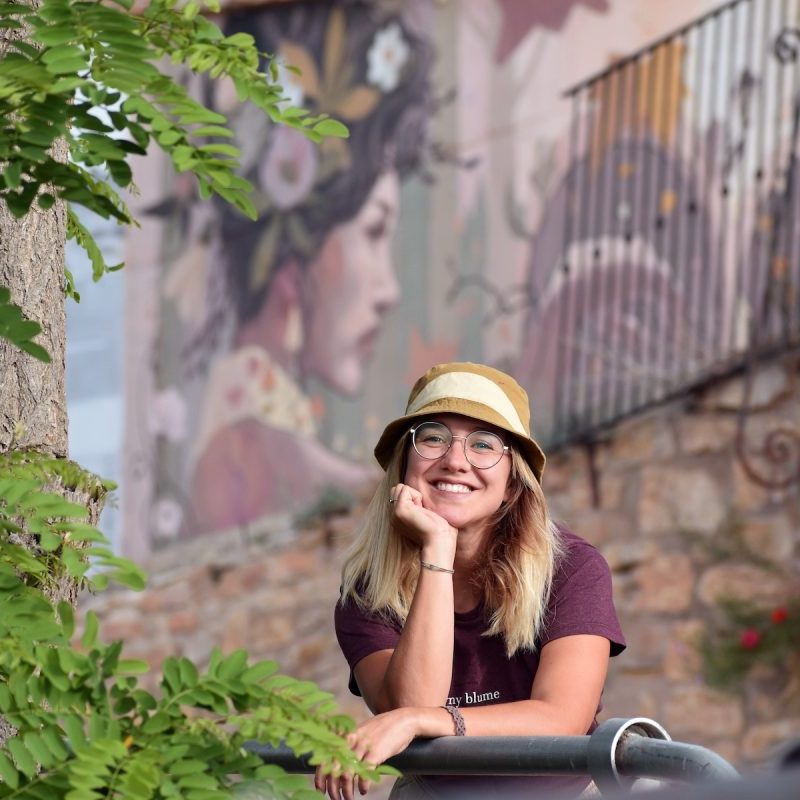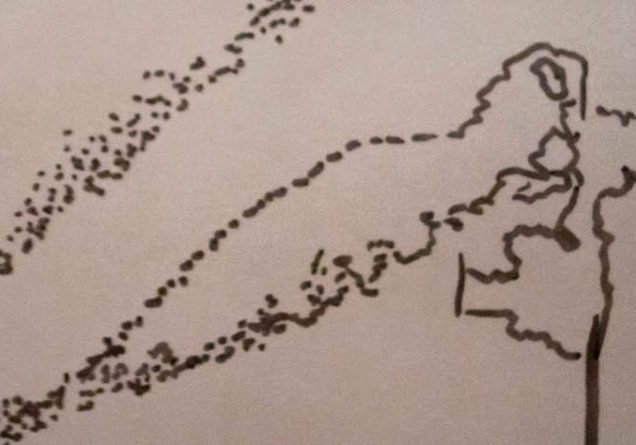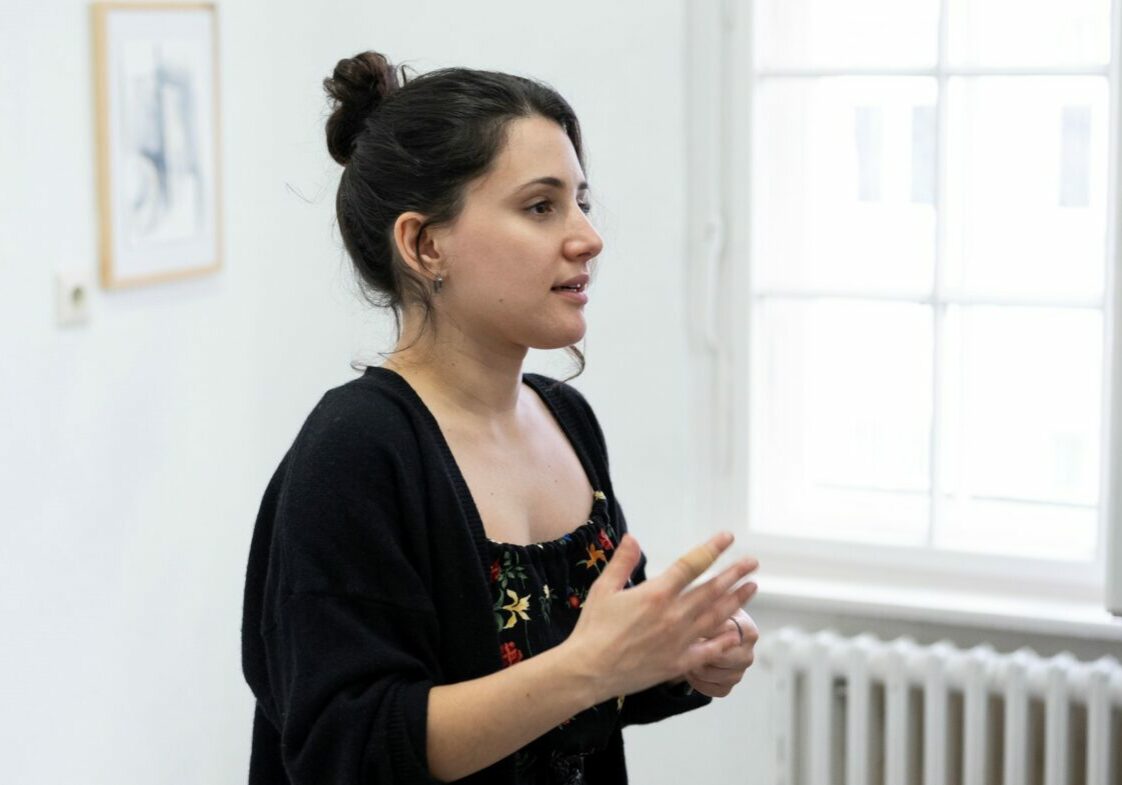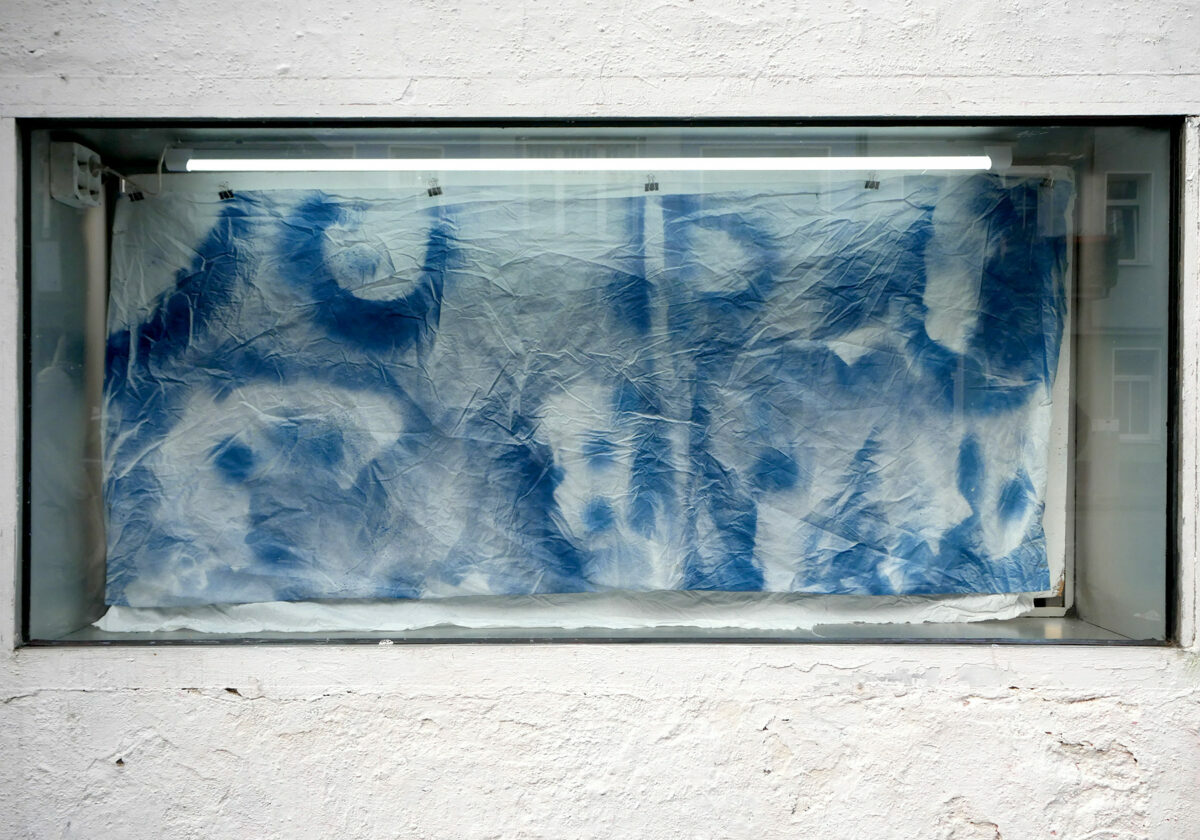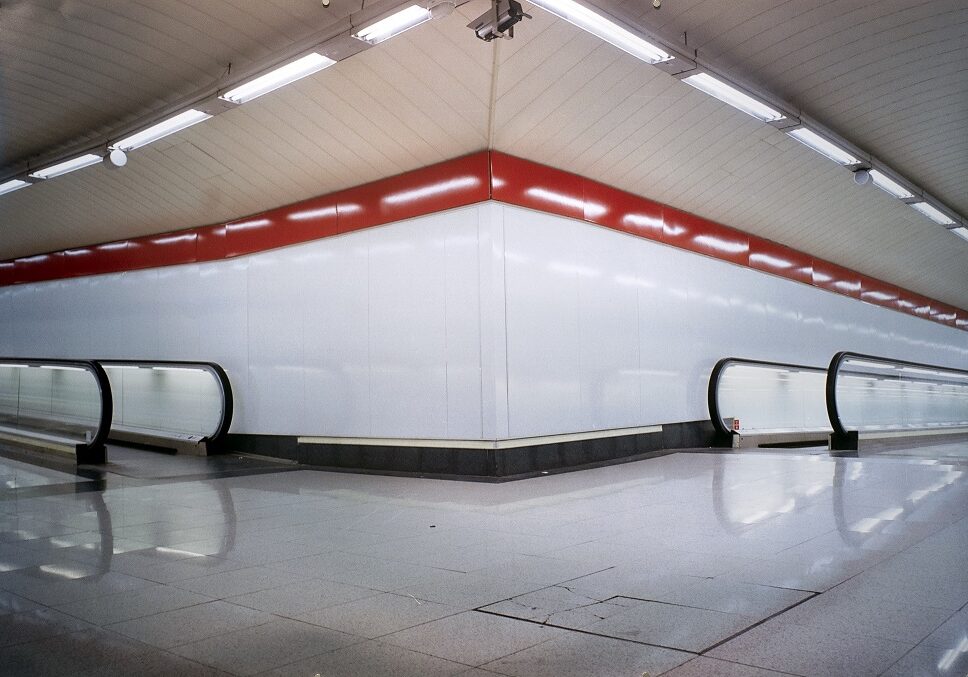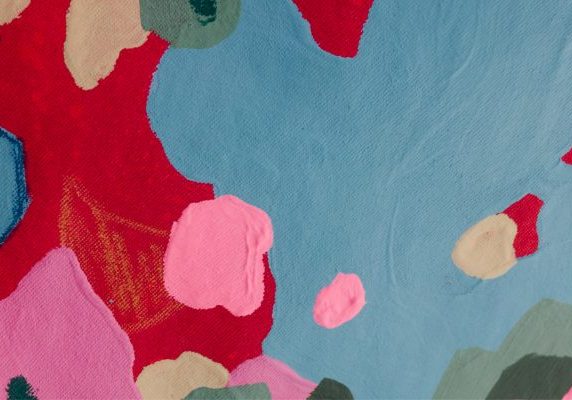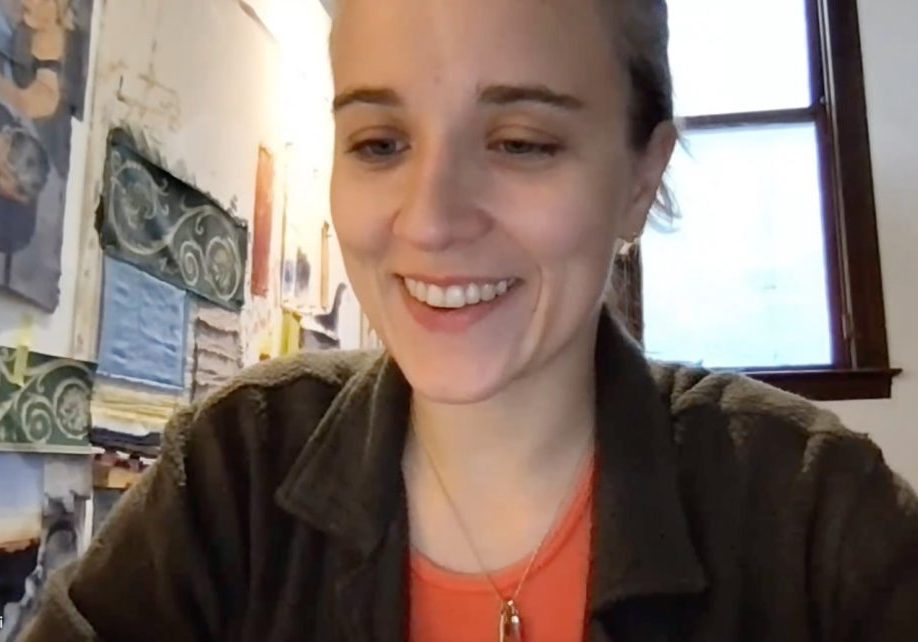Meet the Artist // Tania Traver
Tania Traver is an artist from Valencia, Spain currently based in Berlin, Germany. Her work explores different aspects that shape our identity, both cultural and ethnic. In her creative process she investigates the limits between painting and photography through the technical experimentation of cyanotype and the development of pictorial procedures.
Can you give us an introduction about yourself and tell us about your background?
I was born in a little town, so things, like the landscape, have influenced my life and my sensibility towards art. From the beginning, I knew art was my only way of life because I wasn’t much of a talker, but I could spend hours painting. After school and college, I studied fine arts. I also took some technical courses, but I already had this vision, this passion, for painting people and their physiognomy. I was really interested in this. After finishing my degree, I started doing commissioned portraits and pursued a master’s degree in traditional techniques and analog photography.
It was in Seville when I developed an interest in the people moving through a big city with lots of tourism and migration. I was curious about where all these people on the street came from. I spent five years as a freelance artist, working on mural paintings. During these years, I also trained to be a teacher in a college. I wanted to pass on my passion for art to new generations. I have participated in solo and group exhibitions and conducted workshops.
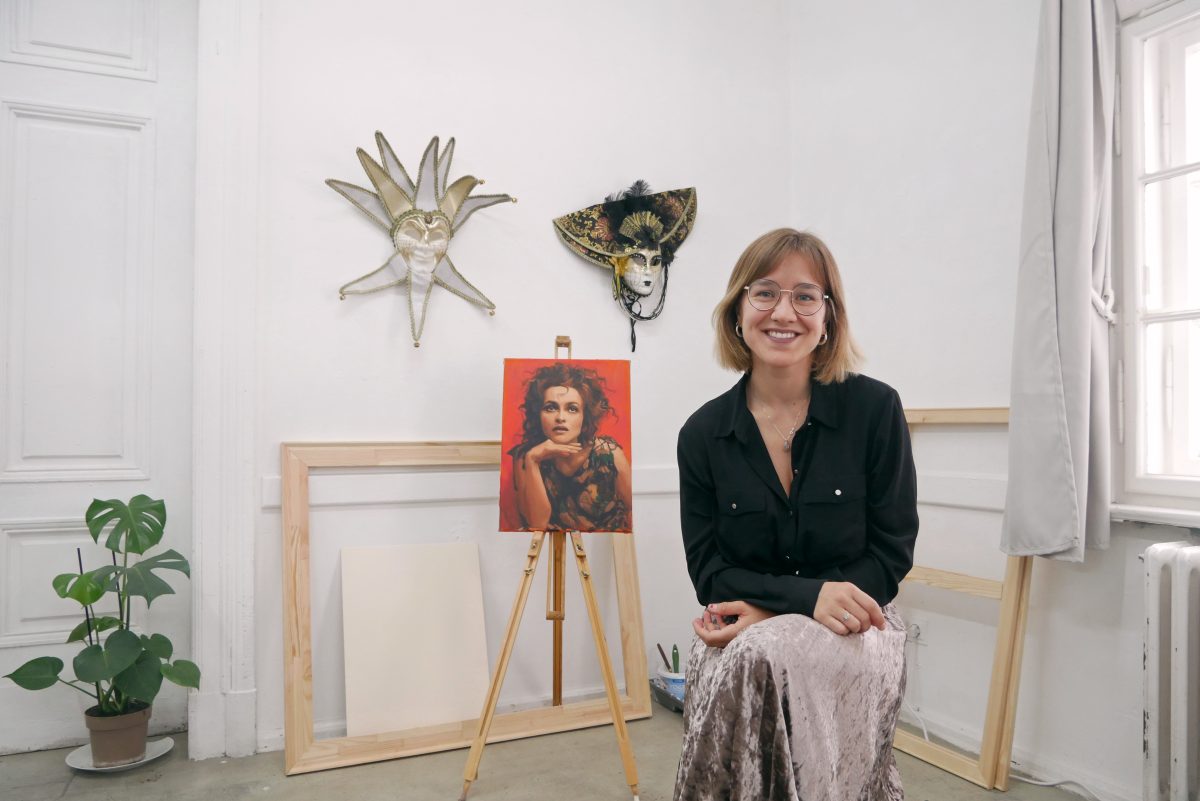
You’ve been painting murals recently, right? Tell us about your compositions. Do you prefer portraits or landscapes?
Yes, painting murals has been my source of livelihood for the past three years. It requires being in good physical condition to spend hours going up and down a scaffold with the paints on my back but I like challenges and it is something that I have enjoyed a lot. Many people don’t understand the difference between painting a portrait in your studio sitting on a stool and creating a realistic painting standing on the rung of a ladder 6 metres high.
I prefer portraits, definitely. I don’t know why, but I feel a need to paint faces. I love the landscape because I live and work in the rural environment, and I find it very inspiring to be surrounded by mountains. But my compositions are different because there is always, at least, a face and floral motifs, that do not refer to landscape painting.. I understand this conjugation of portraits, especially women, and flowers as a metaphor to talk about personal flourishing. I often try to mix these portraits into a magical atmosphere when composing murals.
Who are some artists which have influenced your whole artistic practice?
Initially, most of my references were male painters. I remember before starting my degree at home we had a book? of a collection of the great masters of painting, so I wasn’t exposed to very many female artists. . One of my favourite painters is Rembrandt, but I have also been influenced by the work of the Pre-Raphaelites and Alphonse Mucha.. A few years ago, I realised I couldn’t name a female painter as an influence, and my discomfort among so much masculinity began to sharpen, so I started looking for women in art history to take as examples.
After becoming more aware by reading feminist authors, such as Betty Friedan or Simone de Beauvoir, I tried to dislodge the patterns I had inherited so as not to repeat them again and I changed my discourse. Then I realised how many were forgotten in history books. Although there is an endless list, I could name Artemisia Gentileschi, Berthe Morisot or Mary Cassatt as influential. In a more conceptual sense, I’ve been inspired by Georgia O’Keeffe and Judy Chicago. In a closer context, Maruja Mallo and in photography, there’s Ouka Leele. And in real life, so to speak, I needed references who would be a model to follow, not so distant. In painting, there’s a muralist from Catalonia named Lily Brick. Her life and childhood were very similar to mine, and she made me feel like I could achieve great things too. Seeing a woman succeed with murals on the street made me believe I could do it as well.
What’s your relationship with the art market and the art world? What do you think about it?
I see this world as very elite, still a few steps above me. I have always lived with the theory of “you can do it alone”. I’m quite solitary and try to do everything myself. I don’t have relationships with galleries, but I still struggle. And on top of that, many of the galleries around me were run by men, which kept me on the sidelines because I did not know how to balance that situation of power between genders. I was still alarmed by the statistics of professional women in the art system. I remember a course I took at the Institute of Contemporary Art in Madrid that talked about that; the artist and self-management, the art market, how to price artworks, contacting gallery owners and art collectors…
Now, after this internal dilemma, I think I might need some help because many people don’t appreciate my work otherwise. I want to live well through my art, and if the pay isn’t good enough, I might need to enter the art market. Networking is something I need to work on. I need to generate contacts that validate my artistic work, because they are an opportunity for doors to open which I would not have access with my own means.
How are you finding GlogauAIR? How do you like living with other artists?
I have to say that this is my first artistic residency, so I have come with a lot of desire to share points of view with other artists who are developing their own creative processes. I think it’s really cool because everyone has their own little world in their room. It’s beautiful. When I was in Spain, I was often working alone, I hardly invested time in meeting many artists regularly. I had a rather stressful routine, just sharing if we did some collaboration for work, but the leisure of visiting museums or exhibitions was becoming less and less. And mostly, making art for customers, not for me.
Now, we’re living together, exchanging conversations, seeing each other’s processes, ideas, and references. It’s very enriching. And especially, I can focus simply on finding my voice as a painter and defining the line of my work.
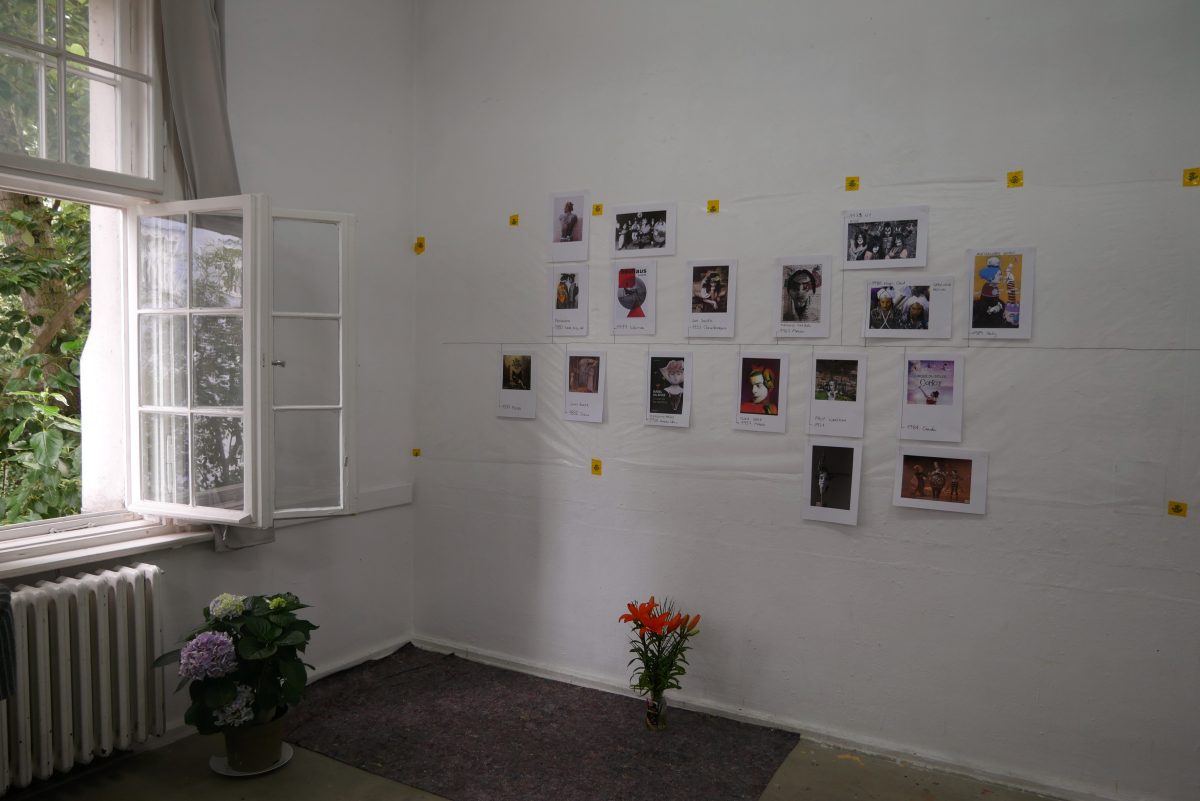
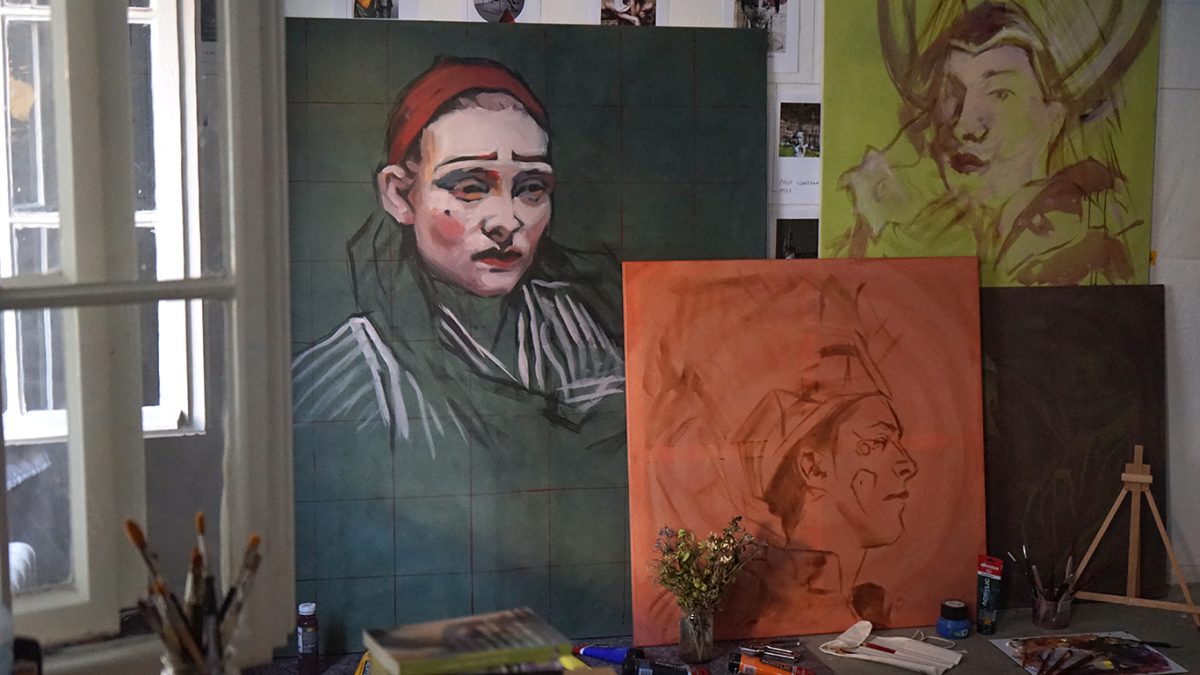
How are you liking Berlin? How do you think it’s influencing your practice?
I love it. It feels like the planets are finally aligning, finding some masks on the street after I was thinking about masks the whole day, that was a sign. There’s a sense of freedom here, and I get a lot of inspiration from the streets. For example, I recently saw a man performing with a crystal ball, which felt magical and very different from where I lived before and decided to paint this particular scene. I think this scene has helped me to focus my research on a style of magical realism, since some of the references mentioned above are influenced by surrealism, I like to mix both concepts.
I think Berlin can benefit me a lot in the development of my project here. Because I want to talk about people and cultural identity, and examine a concept which is changing all the time. I like to walk through the busy streets as a drifting artist, and also observe the new ways of appropriating space, the synergies derived from migration and tourism.
You’re staying six months in the residency, right? Do you have any plans yet for after the residency?
Yes, I’m super happy because 6 months is a good amount of time to connect with the city and the rhythms of life here. As for later plans, the truth is, not really. I postponed my entire work schedule to 2025, but if a brilliant opportunity arises here, I will not hesitate to stay for a second. I feel that art is much more appreciated here in Berlin, and I wouldn’t mind staying. I want to take advantage of everything I can find here and improve my German. I’m still freelancing, so I’ll look for opportunities that could take me a step further. Maybe I’ll stay if I find someone who wants a mural painted or whatever. If not, I’ll return to Spain. In the meantime, I am also developing my Master’s dissertation to become a professor, and in January, I will defend it in court.


